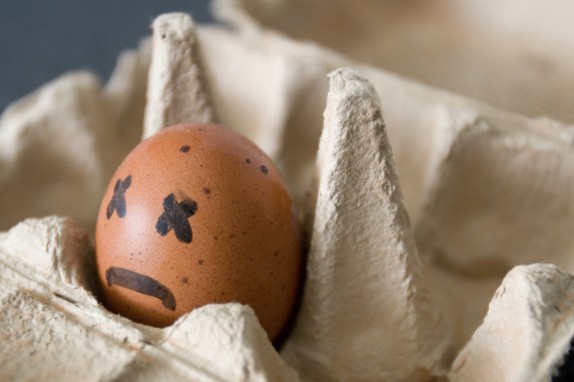
The Silver Shadow food monitoring mess
We’ve all hidden things in our bedrooms. Whether it was an oh so secret diary, a stash of our favorite candy bars, or a PG-13 rated movie when we were only 12 years old, the bedroom acts as a last safe-house to store our possessions. Placing raw meat in our bedroom sinks though? Who’s ever heard of that? The Silver Shadow cruise ship has.
A few weeks ago, the Silver Shadow cruise liner failed a CDC (Center for Disease Control) inspection due to an organized attempt to conceal 15 trolleys of food from CDC inspectors. Where did they try to conceal the food? In crew cabin sinks and corridors.
We can assume the food did not have the CDC recommended documentation of being stored at a proper temperature, or wasn't being stored at a proper temperature when the CDC Inspectors began their investigation. We can also assume then, that at least part of the food was to be served to the passengers during the remainder of the voyage. If it hadn't been for a crew member alerting the CDC Inspectors to this none-too-glamorous heist, the Silver Shadow would have gotten away with their food storage inadequacies.
A lot of hate has been thrown at the Silver Shadow. It’s been a few weeks now, our stomachs have settled, and we decided that we’d offer some help to other cruise ships (and anybody who is monitoring food, drugs, or vaccines).
First, MONITOR YOUR PRODUCTS’ TEMPERATURES. Please.
The CDC should not be feared, but respected. It’s an important institution that makes America healthier and safer. Their standards and recommendations are put into place to protect us. Want more information on the CDC? Go to their Vessel Sanitation Program Website. There you will find information on individual cruise ship scores (here is the Silver Shadow's most recent score, Item 16 is the debacle we are focusing on), videos for cruise employee training, and many other resources for both the Cruise Liners and their customers.
Specifically, the CDC's 2011 Vessel Sanitation Program Operations Manual provides a wealth of information for Cruise Ships.
How do you monitor a products temperature?
With a data logger or chart recorder. These devices take regular temperature readings at a pre-programmed interval, and then store that data for later readings, either on a paper chart, a hard drive, or in a cloud application. These devices do what a mercury thermometer can't, they give you proof of your recorded temperatures, and they give you the information to analyze your data.
In the CDC's Operation Manual (here's the link again), section 7.4.2.3.1 states:
Food TEMPERATURE-MEASURING DEVICES must have a numerical scale, printed record, or digital readout in increments no greater than 1°C (2°F) in the intended range of use.
The key here is "printed record." While chart recorders write temperature and humidity data on a paper chart, providing the immediate record, data loggers are a newer and better technology. With a data logger, you can print out records during an audit in a variety of forms. Whether picking one particular data point, or showing the environmental temperature over a large period of time, data loggers allow you to do more with your data. Furthermore, Dickson offers a wireless data monitoring solution, DicksonOne, which allows someone at the cruise liner headquarters in New York to view the data of one specific ship, or one specific refrigerator in the Bahamas. If that doesn't sound like a valuable solution to your cruise ship monitoring problems, I don't know what will.
Also, the CDC outlines specific temperatures food should be cooked and stored at. For example, did you know that potentially hazardous food must be thawed within certain guidelines? It can be thawed under refrigeration, but only if the food maintains a temperature of 5°C (41°F) or less.
Hello chart recorders and data loggers. The CDC devotes an entire sub-section (7.4.2.3) to outlining the proper protocols of installing, and using TMD's (Temperature Measuring Devices) to monitor food. Not familiar with data loggers and their specifications? Call an expert. We suggest 1-800-757-3747.
Monitoring allows for both proof and analysis.
Chart recorders and data loggers let you analyze the past temperatures of your products. They provide information on when and where temperature and humidity fluctuations occurred.
For Cruise Liners, monitoring the temperature of their food both eliminates the chance of failing an audit, and thus bad press, but also helps ensure the food they are serving is safe. If you are a passenger on a cruise line, wouldn't you rather eat food that has been monitored than food that hasn't? Why ruin your vacation with a stomach flu?
Dickson offers those storing foods a variety of monitoring options. Check out our product line for more information.
